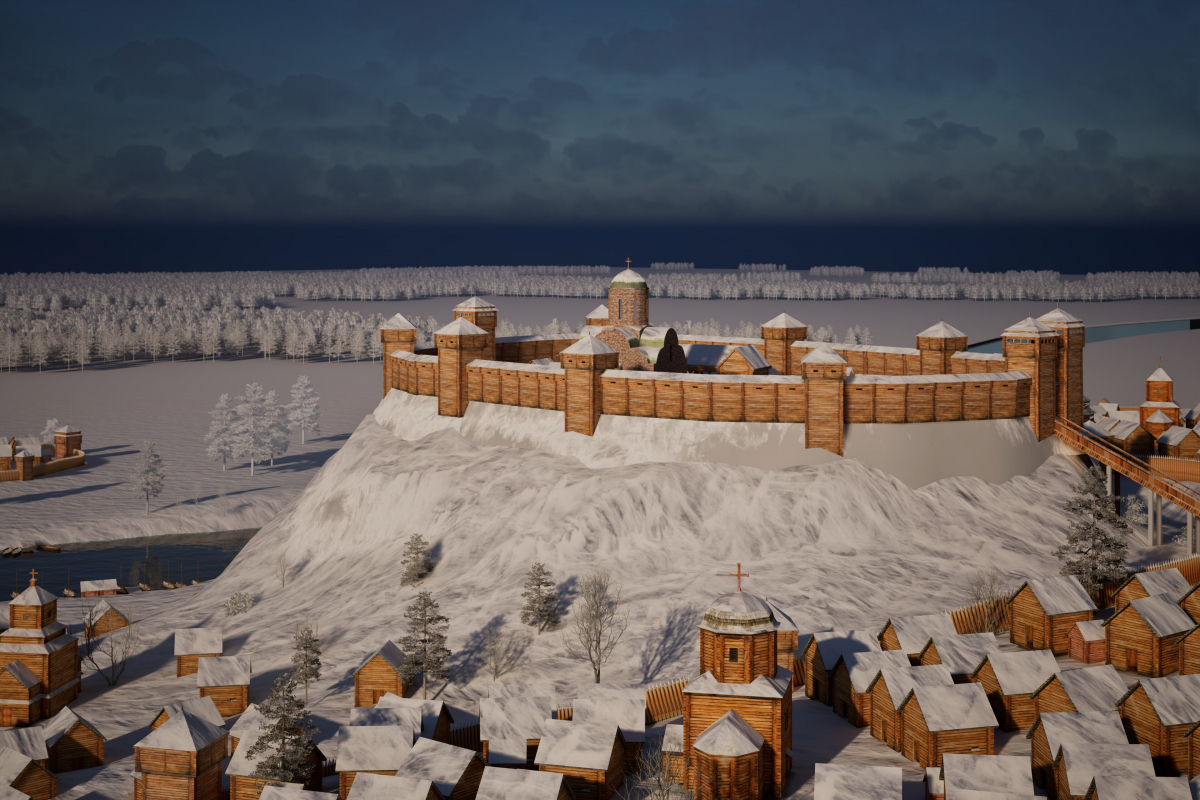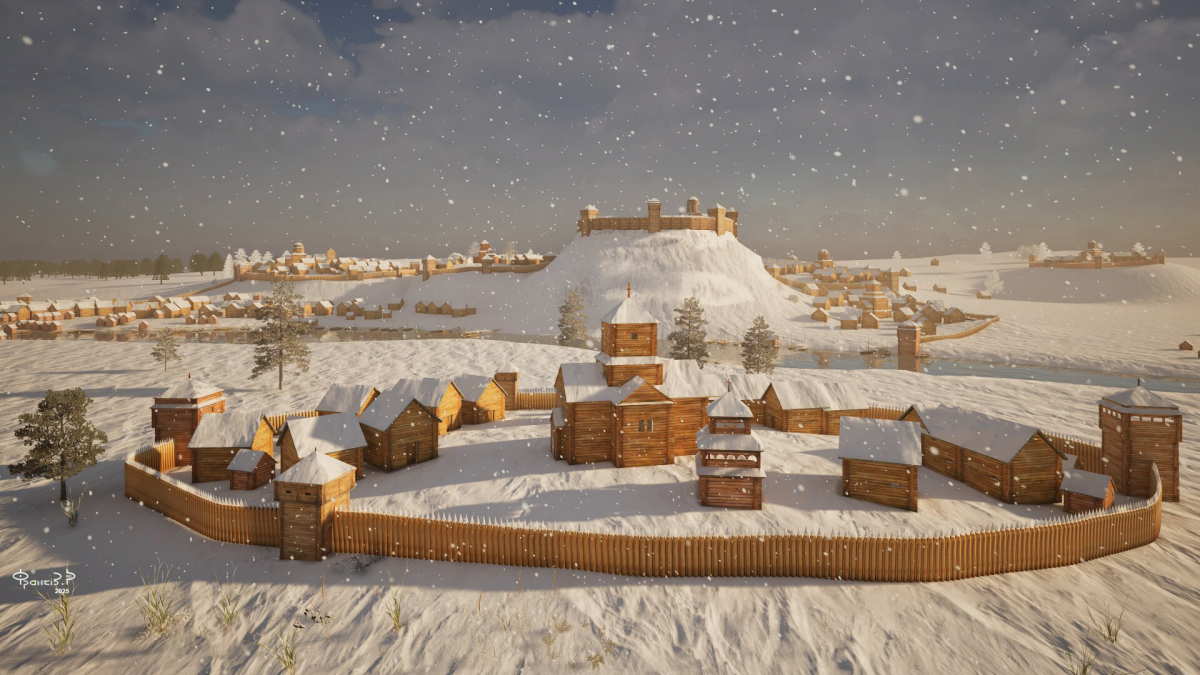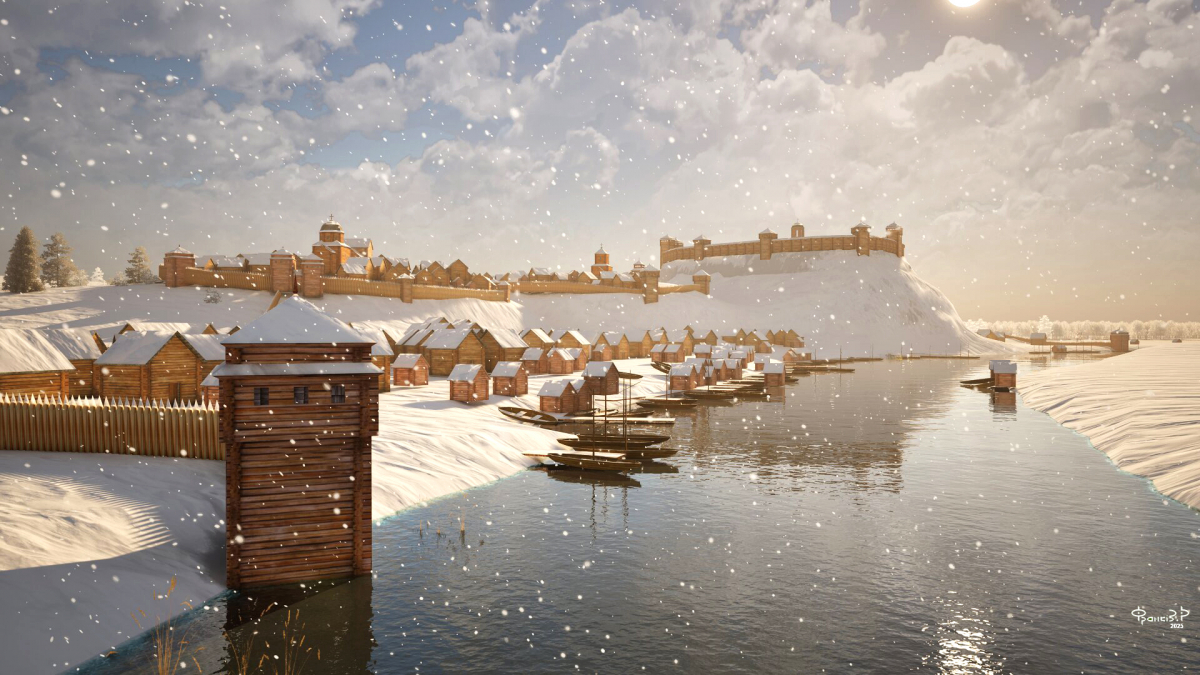Серед усіх руських князів саме Данило Романович удостоївся корони, яку йому від імені Папи Римського передали ватиканські посли. Коронація відбулася 1253 року у місті Дорогичин на Західному Бузі. Зараз це маленьке містечко на 2 тисячі мешканців у Підляському воєводстві Польщі, а в XII–XIII століттях там було укріплене місто з церквами і монастирями, річковим портом, мурованим храмом, в якому і відбулася коронація.
Among all the Rus’ kniazes, it was Danylo Romanovych who was crowned with the crown, which was handed over to him by Vatican ambassadors on behalf of the Pope. The coronation took place in 1253 in the town of Dorohychyn on the Western Buh. Nowadays it is a small town of 2,000 inhabitants in the Podlaskie Voivodeship of Poland, but in the XII-XIII centuries it was a fortified city with churches and monasteries, a river port, and a brick church, where the coronation took place.
Unfortunately, historical events and natural factors led to the loss of Rus’ Dorohychyn’s heritage. Only an inconspicuous roadside stone attests to the historical event of the coronation, and only archaeology can tell us about the kniazhy heritage. However, Roman Frankiv, an Associate Professor at the Department of Design and Fundamentals of Architecture, the Institute of Architecture and Design, Lviv Polytechnic, visualised the appearance of Dorohychyn in the 13th century based on scientific research.
According to historians, Dorohychyn was founded in the 11th century by Yaroslav the Wise, and the first mention is found in the Rus’ Chronicle of 1142. It was the second most important town after Berestia in this border region: a kniazhy customs office and a defensive post that protected against the Yotvingian tribe.
«Archaeological research in Dorohychyn has been carried out since the end of the 19th century, when these lands were part of the Russian Empire. Later, Polish researchers worked there. Based on all the known findings, we can estimate the scale of the town and the location of certain buildings», notes Roman Frankiv.
The fortified dytynets apparently had an arsenal and treasury, a military garrison, a government official who ruled on behalf of the kniaz, clergy, and representatives of the trade elite. They lived in two-storey wooden palace-type buildings.
«How do we know that the buildings were two-storey? There are excavations in Zvenyhorod of that time, where even on the outskirts there were two-storey buildings. Therefore, we can conclude that in the central part of the city, the housing was definitely two-storey. The kniaz did not live permanently in Dorohychyn», says the researcher.
The Church of the Virgin on the dytynets was built of brick. It was a masonry structure, but the foundation did not survive, as that part of the hill had been eroded away. However, archaeologists found the remains of tiles.
«From those materials, we can say that it was a brick church. And since this is a Volyn-Kyiv tradition, brick construction prevailed there. Here in Galicia, we had white stone, while there – of brick. For us, this church is historic because the coronation of Danylo Halytskyi took place there», says Roman Frankiv.
Nowadays, this historic event is only mentioned in the city by a small sign at the crossroads. It says that «the coronation of Daniel Romanovych as king took place here», without specifying who he was. Also there is a small wooden sculpture in the local museum. On the castle hill, there is now an obelisk dedicated to Polish independence.
«In general, the coronation should have taken place in some more significant place, a historic cathedral. But at that moment, when the ambassadors from the pope arrived, Danylo went on a campaign against the Yotvingians who lived north of Dorohychyn. In general, this tradition of accepting the crown was popular at the time. It was politically beneficial to avoid aggression from the West. Although kniaz Danylo was not sure whether it was necessary to do so, but neighbouring Polish kniazes convinced him», explains the researcher.
The rendering of 13th-century Dorohychyn shows a fortified dytynets with a brick church on a hill, and residential buildings with other churches below. The architect offered a multi-angled reconstruction of the medieval town, including a visualization of the possible appearance of the port.
Read more on Zaxid.net.




